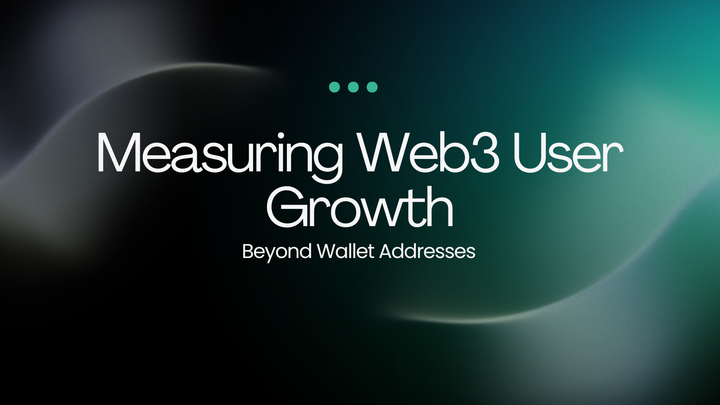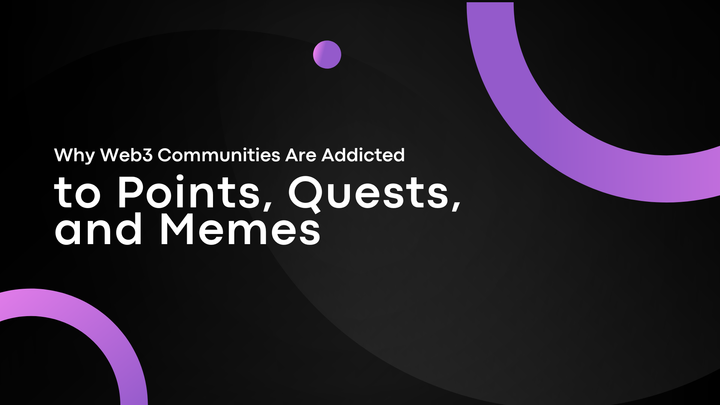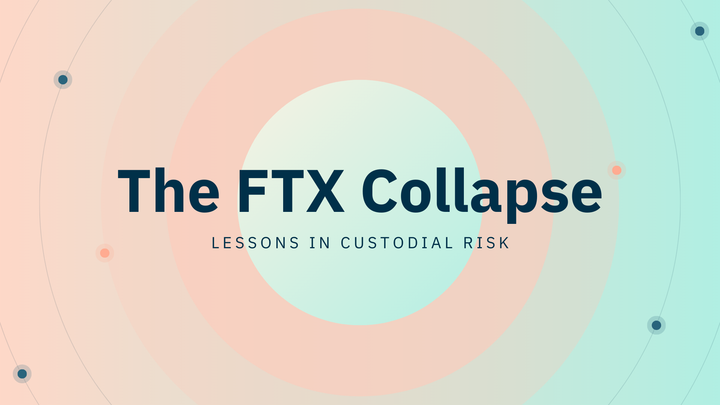Mitosis: Fostering Liquidity Management in Web3

Introduction
Decentralized Finance (DeFi) has emerged as a transformative force in the financial world, promising to democratize access to financial services through blockchain technology. However, one of the persistent challenges in DeFi is liquidity fragmentation, where assets are locked in isolated blockchain ecosystems, leading to inefficiencies, volatile yields, and barriers to innovation. Mitosis, a Layer 1 (L1) blockchain protocol, is addressing this challenge head-on by introducing a novel approach to liquidity management through its Ecosystem-Owned Liquidity (EOL) model and programmable liquidity framework. This article explores how Mitosis is fostering liquidity management in Web3, revolutionizing the DeFi landscape with its innovative technologies, modular architecture, and community-driven governance.
The Liquidity Conundrum in DeFi
Liquidity is the lifeblood of DeFi, enabling seamless transactions, lending, borrowing, and trading across decentralized protocols. However, the multi-chain nature of Web3 has led to significant liquidity fragmentation. Assets locked in one blockchain, such as Ethereum, cannot easily be utilized on another, like Solana or Avalanche, without complex bridging processes that introduce risks, delays, and costs. As of February 2024, approximately 60% of DeFi’s Total Value Locked (TVL) was concentrated in Ethereum’s L1, highlighting the uneven distribution of liquidity across chains. This fragmentation results in:
- Capital Inefficiency: Over $50 billion in TVL remains idle or underutilized due to chain-specific silos.
- High Bridging Costs: Cross-chain transfers often involve gas fees, wait times, and risks of bridge hacks.
- Limited Innovation: Developers face challenges building multichain decentralized applications (dApps) due to siloed liquidity.
Mitosis tackles these issues by creating a modular liquidity protocol that unifies liquidity across chains, enhances capital efficiency, and empowers both users and developers with greater control and flexibility.
Mitosis: A New Paradigm for Liquidity Management
Mitosis is an L1 blockchain designed to redefine liquidity management in the modular era of Web3. Its flagship product, Ecosystem-Owned Liquidity (EOL), enables community-driven liquidity pools that replicate the capabilities of large financial institutions while remaining decentralized. By leveraging technologies like Hyperlane, Cosmos SDK, and its proprietary Matrix Vaults, Mitosis offers a scalable, permissionless, and transparent solution for cross-chain liquidity management. Here’s how Mitosis is fostering liquidity management in Web3:
Ecosystem-Owned Liquidity (EOL)
At the core of Mitosis’s vision is EOL, a model that allows liquidity providers (LPs) and protocols to collectively own and govern liquidity pools through a Decentralized Autonomous Organization (DAO) structure. Unlike traditional DeFi models, where liquidity is often controlled by centralized entities or mercenary capital, EOL empowers retail LPs to pool their assets and make governance decisions via public votes and forum discussions.
How EOL Works
- Liquidity Pooling: Users deposit assets (e.g., ETH, USDC) into Mitosis Vaults, receiving tokenized representations called miAssets (e.g., miETH). These miAssets grant governance rights and yield opportunities.
- Governance Power: The more assets a user contributes, the greater their voting power in deciding how liquidity is allocated across protocols and chains.
- Transparency and Fairness: EOL eliminates the opaque, private deals common in DeFi, ensuring that liquidity allocation is transparent and verifiable on-chain.
Benefits of EOL
- Community Empowerment: Retail LPs gain bargaining power akin to institutional players, benefiting from economies of scale.
- Resilience: By decentralizing liquidity ownership, Mitosis reduces reliance on external providers, mitigating risks associated with “mercenary” liquidity that exits when incentives dry up.
- Scalability: EOL supports modular blockchains, enabling new chains to bootstrap liquidity through community-driven governance.
EOL represents a shift from fragmented, protocol-specific liquidity to a unified, ecosystem-owned model that fosters collaboration and long-term stability.
Programmable Liquidity with miAssets and maAssets
Mitosis introduces two types of tokenized assets: miAssets and maAssets that transform liquidity into a programmable primitive, enabling seamless integration across DeFi ecosystems.
miAssets
- simple explanation: miAssets are tokenized representations of deposited assets (e.g., miETH for ETH) that grant governance rights and passive yield. They are created when users deposit assets into Mitosis Vaults without requiring manual bridging.
- Use Cases: miAssets can be used as collateral for loans, traded within the Mitosis ecosystem, or staked to earn additional rewards. For example, an miETH holder can vote to deploy liquidity to Aave on Avalanche, earning yields without moving assets off Ethereum.
- Interoperability: miAssets enable cross-chain functionality by leveraging Mitosis’s permissionless interoperability, powered by Hyperlane.
maAssets
- Definition: maAssets are yield-bearing tokens received when users lock Vanilla Assets (1:1 representations of deposited assets) in time-bound Matrix campaigns. They follow the ERC-4626 standard for easy management and transferability.
- Purpose: maAssets incentivize long-term liquidity provision by offering fixed-term rewards and exclusive yields from partnered DeFi protocols.
- Flexibility: Unlike traditional locked liquidity, maAssets remain liquid within the Mitosis ecosystem, allowing users to manage their positions dynamically.
Impact on Liquidity Management
- Capital Efficiency: Users can deposit assets once and earn rewards across multiple protocols, maximizing returns without sacrificing liquidity.
- Seamless Cross-Chain Operations: Mitosis’s native minting of Vanilla Assets eliminates the need for wrapped tokens or complex bridging, reducing risks and costs.
- Developer-Friendly: Programmable liquidity enables developers to build advanced dApps, such as yield-optimized stablecoins or cross-chain collateral pools, using miAssets and maAssets.
By tokenizing liquidity positions, Mitosis ensures that assets remain composable, liquid, and usable across the multi-chain DeFi landscape.
Matrix Vaults: Curating Premium DeFi Opportunities
Matrix, Mitosis’s flagship product, is a curated platform that aggregates liquidity from top DeFi protocols, offering LPs superior rewards and full control over their assets. Matrix Vaults operate as secure smart contracts deployed on supported chains, locking assets and minting Vanilla Assets on the Mitosis Chain.
Key Features of Matrix Vaults
- Exclusive Rewards: Matrix partners with leading DeFi protocols (e.g., Ether.fi, Symbiotic) to offer enhanced yields and gated opportunities for loyal LPs.
- Transparent Structure: All terms, including campaign duration and expected returns, are disclosed upfront, ensuring fairness.
- Dynamic Rebalancing: Algorithms optimize liquidity allocation based on demand, maximizing capital efficiency.
- No Slippage: Liquidity remains on the original chain (e.g., ETH on Monad stays on Monad), reducing risks associated with cross-chain transfers.
Example: Matrix Theo Campaign
In March 2025, Mitosis launched the Matrix Theo Campaign in collaboration with Theo Network, capping deposits at 3,000 miweETH/weETH. Participants could earn Theo token rewards, funding rate yields from Theo’s Straddle strategy, and MITO Points simultaneously. This campaign exemplifies how Matrix Vaults integrate institutional-grade, delta-neutral yield strategies with retail accessibility, solving traditional DeFi liquidity challenges.
Cross-Chain Interoperability with Hyperlane
Mitosis’s cross-chain capabilities are powered by Hyperlane, a permissionless interoperability protocol that enables seamless communication and asset transfer between blockchains. Unlike traditional bridges, which rely on permissioned Arbitrary Message Bridges (AMBs) and introduce centralization risks, Hyperlane allows Mitosis to integrate any chain without intermediaries.
How Hyperlane Enhances Liquidity Management
- Permissionless Integration: New modular blockchains can join the Mitosis ecosystem without requiring approval, fostering scalability.
- Instant Finality: Mitosis’s cross-chain transactions avoid the delays associated with rollups, as liquidity is pre-deployed on both sides.
- Security: Hyperlane’s Interchain Security Modules (ISMs) align security with liquidity, preventing double-spending and fraud.
Example: Cross-Chain Lending
A user can lend ETH on Ethereum to borrow USDC on Avalanche via Mitosis’s single chain. The process involves minting vETH (Vanilla ETH) on the Mitosis Chain, which is then used to facilitate the transaction without manual bridging. This streamlined approach enhances capital efficiency and reduces operational complexity.
Community-Driven Governance with Morse DAO
Mitosis’s Morse DAO allows $MITO token holders to govern key protocol decisions, such as liquidity allocation and partnership agreements. This community-driven approach ensures that the ecosystem evolves in alignment with user interests.
Governance Features
- Voting Power: miAsset holders vote on how liquidity is deployed across chains and protocols, with influence proportional to their stake.
- Transparency: All governance decisions are recorded on-chain, eliminating the “shadow system” of private deals that plagues DeFi.
- Incentives for Long-Term Commitment: LPs who lock assets for longer periods receive higher rewards, discouraging mercenary behavior.
Impact on Liquidity Management
Morse DAO fosters a fair and inclusive liquidity market by giving retail LPs a voice in protocol decisions. This democratizes access to high-yield opportunities and aligns the ecosystem with long-term sustainability.
Mitosis Expeditions: Gamifying Liquidity Provision
To bootstrap liquidity, Mitosis introduced the “Expeditions” campaign, a gamified program that rewards users with MITO Points for depositing assets, completing tasks, and referring others. These points grant eligibility for $MITO token airdrops, incentivizing early adoption.
How Expeditions Work
- Deposit Assets: Users deposit assets like weETH into Mitosis Vaults, receiving miAssets and MITO Points.
- Earn Multiple Rewards: Participants can farm airdrops from partnered protocols (e.g., Renzo Protocol, EigenLayer) alongside MITO Points with a single deposit.
- Community Engagement: Badges and referral bonuses encourage active participation, strengthening the ecosystem.
Success Metrics
Since its launch, Mitosis has accumulated over $80 million in TVL in just three months, demonstrating the effectiveness of its incentive model. The Expeditions campaign has also fostered partnerships with notable dApps like Ether.fi and Hyperlane, expanding the ecosystem’s reach.
Modular Architecture for Scalability
Mitosis leverages a modular blockchain architecture built on the Cosmos SDK, separating consensus, execution, and data management. This design allows for seamless updates and integrations without network downtime, unlike monolithic blockchains like Solana.
Benefits of Modularity
- Flexibility: Mitosis can integrate new technologies, such as Hyperlane, to enhance interoperability.
- Scalability: The modular design supports the onboarding of new chains and protocols, ensuring the ecosystem grows with Web3’s demands.
- Developer-Friendly: The architecture simplifies dApp development, enabling builders to create innovative financial products.
Addressing DeFi’s Information Asymmetry
Mitosis tackles the “shadow system” of private deals and hidden arrangements in DeFi, where privileged protocols and whale LPs dominate yield opportunities. By making liquidity programmable and governance transparent, Mitosis ensures that all transactions are verifiable on-chain, leveling the playing field for retail users.
Solutions to Information Asymmetry
- On-Chain Transparency: All liquidity arrangements and yields are recorded publicly, eliminating opaque deals.
- Programmable Liquidity: LPs can access the same opportunities as institutional players through miAssets and maAssets.
- Auditable Records: On-chain data simplifies regulatory compliance for institutional participants.
Strategic Partnerships and Funding
Mitosis has secured $7 million in funding from prominent investors like Amber Group, Foresight Ventures, and Big Brain Holdings, signaling strong industry confidence. Partnerships with Ether.fi, Symbiotic, and Hyperlane have further bolstered its ecosystem, enabling seamless integration with leading DeFi protocols.
Notable Collaborations
- Ether.fi: A significant portion of Mitosis’s TVL is in Wrapped Ether.fi Ether (weETH), highlighting its integration with liquid staking protocols.
- Hyperlane: Powers Mitosis’s permissionless cross-chain interoperability.
- Google Cloud: Co-hosted the 2024 Liquidity Summit, showcasing Mitosis’s role in Web3 innovation.
Future Vision and Roadmap
Mitosis’s roadmap includes expanding its ecosystem through new partnerships, launching its mainnet, and introducing structured products like tokenized ETFs backed by its liquidity pools. The protocol aims to enable single-asset liquidity provision (e.g., ETH-only pools) and integrate KYC/AML-compliant vaults for institutional adoption.
Upcoming Milestones
- Mainnet Launch: Scheduled post-April 2025, following successful testnet campaigns.
- Expanded Partnerships: Collaborations with additional DeFi protocols and modular blockchains.
- Advanced dApps: Support for yield-optimized stablecoins and cross-chain collateral pools.
Challenges and Considerations
While Mitosis’s vision is ambitious, it faces challenges common to Web3 protocols:
- Technical Complexity: Cross-chain coordination introduces risks like transaction reliability and gas cost management.
- Security: Ensuring the robustness of Hyperlane’s ISMs and Mitosis Vaults is critical to preventing exploits.
- Adoption: Convincing LPs and developers to transition from established protocols requires robust incentives and proven reliability.
Mitosis addresses these challenges through rigorous security measures, community-driven governance, and a user-centric design that abstracts complex processes.
Conclusion
Mitosis is poised to redefine liquidity management in Web3 by addressing the core challenges of fragmentation, inefficiency, and information asymmetry. Through its EOL model, programmable liquidity with miAssets and maAssets, Matrix Vaults, and Hyperlane-powered interoperability, Mitosis creates a unified, transparent, and scalable liquidity ecosystem. Its community-driven governance and gamified incentives further empower retail LPs, fostering a fairer and more inclusive DeFi landscape. As Web3 evolves into a multi-chain, modular era, Mitosis stands as a catalyst for innovation, unlocking the full potential of decentralized finance. By transforming liquidity into a programmable primitive, Mitosis is not just solving today’s challenges but paving the way for a borderless, efficient, and decentralized financial future.



Comments ()